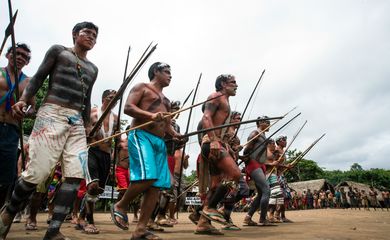Mortality of indigenous children over double that of non-indigenous

The mortality rate for children under four years old among indigenous peoples in Brazil exceeds double that of the general child population in the country. This finding is highlighted in the conclusive report of a study conducted by Núcleo Ciência Pela Infância (NCPI), a non-governmental organization that engages researchers from diverse disciplines and collaborates with various scientific institutions.

The survey unveils data spanning from 2018 to 2022. In the last year of this period, among indigenous communities, the mortality rate for children under four years old stood at 34.7 deaths per thousand live births. This rate is 2.44 times higher than that recorded among the non-indigenous Brazilian population, where there were 14.2 deaths per thousand live births in 2022.
Throughout the rest of the series, the pattern remains consistent: mortality rates among indigenous communities consistently exceeded double those of the general population. The narrowest margin was observed in 2020, where there were 29.6 child deaths per thousand live births among indigenous peoples, marking a 2.4-fold increase compared to the rate of 12.3 recorded for the rest of the population.
The data underscores that indigenous communities are facing an inadequate situation, falling short of the targets outlined in the United Nations (UN) 2030 Agenda. Ratified in a 2015 assembly attended by 193 nations, this agenda encompasses 17 Sustainable Development Goals (SDGs) aimed at eradicating poverty and fostering a more prosperous world for all by 2030.
In the case of under-five mortality, the goal is to reduce it to less than 25 deaths per 1,000 live births. "Although this level has already been reached by non-indigenous Brazilian children, it is still a distant reality for the country's indigenous population," highlights the study.
When it comes to neonatal deaths, a significant disparity is evident. In 2022, among indigenous communities, the rate stood at 12.4 deaths per thousand live births for babies up to 27 days old, compared to a rate of 8 among the non-indigenous population.
According to Agenda 2030, the aim is to decrease neonatal mortality to at least 12 per 1,000 live births. However, as with under-five mortality, this target has yet to be achieved among the indigenous population.
Titled "Inequalities in the Health of Indigenous Children," the study conducted by NCPI marks the 12th installment in a series dedicated to exploring issues concerning early childhood development.




